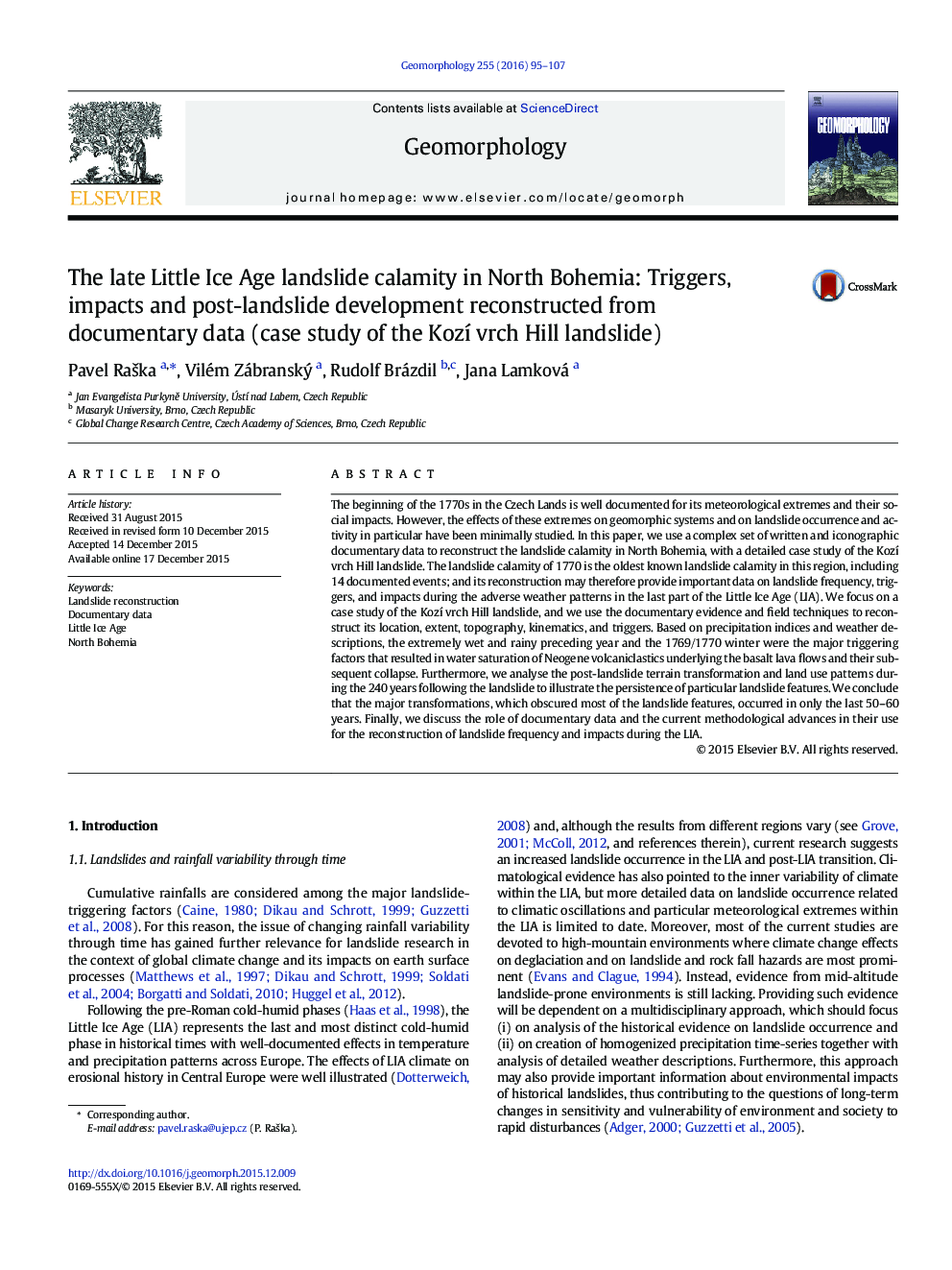| کد مقاله | کد نشریه | سال انتشار | مقاله انگلیسی | نسخه تمام متن |
|---|---|---|---|---|
| 4684112 | 1635394 | 2016 | 13 صفحه PDF | دانلود رایگان |

• The documentary data enabled to identify 14 landslides within the late LIA landslide calamity.
• Precipitation reconstruction revealed anomalous weather patterns as major landslide triggers.
• The kinematics and impacts of rapid to very rapid landslide at the Kozí vrch were reconstructed.
• Post-landslide landscape development indicates major transformations in the last 50–60 years.
The beginning of the 1770s in the Czech Lands is well documented for its meteorological extremes and their social impacts. However, the effects of these extremes on geomorphic systems and on landslide occurrence and activity in particular have been minimally studied. In this paper, we use a complex set of written and iconographic documentary data to reconstruct the landslide calamity in North Bohemia, with a detailed case study of the Kozí vrch Hill landslide. The landslide calamity of 1770 is the oldest known landslide calamity in this region, including 14 documented events; and its reconstruction may therefore provide important data on landslide frequency, triggers, and impacts during the adverse weather patterns in the last part of the Little Ice Age (LIA). We focus on a case study of the Kozí vrch Hill landslide, and we use the documentary evidence and field techniques to reconstruct its location, extent, topography, kinematics, and triggers. Based on precipitation indices and weather descriptions, the extremely wet and rainy preceding year and the 1769/1770 winter were the major triggering factors that resulted in water saturation of Neogene volcaniclastics underlying the basalt lava flows and their subsequent collapse. Furthermore, we analyse the post-landslide terrain transformation and land use patterns during the 240 years following the landslide to illustrate the persistence of particular landslide features. We conclude that the major transformations, which obscured most of the landslide features, occurred in only the last 50–60 years. Finally, we discuss the role of documentary data and the current methodological advances in their use for the reconstruction of landslide frequency and impacts during the LIA.
Journal: Geomorphology - Volume 255, 15 February 2016, Pages 95–107